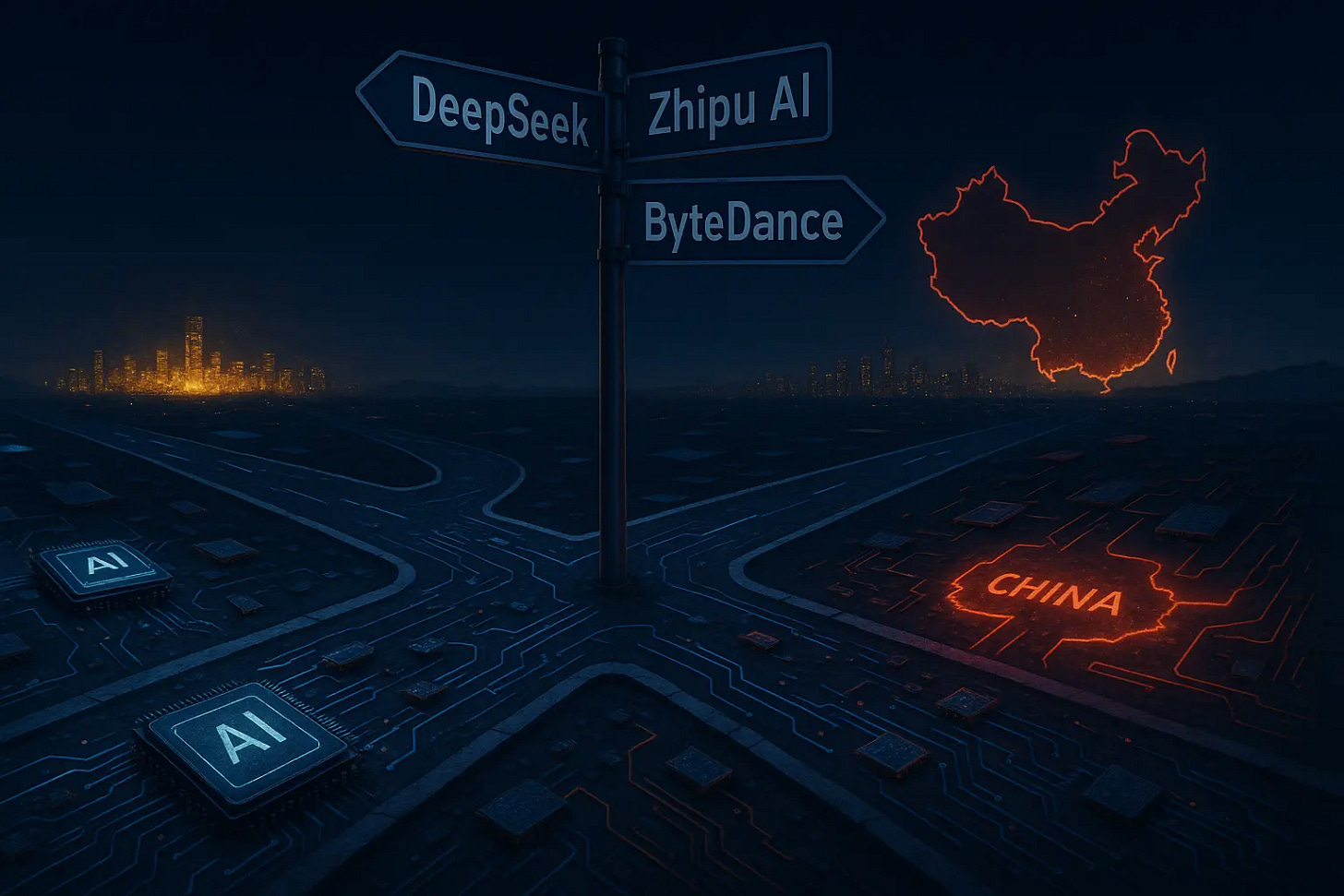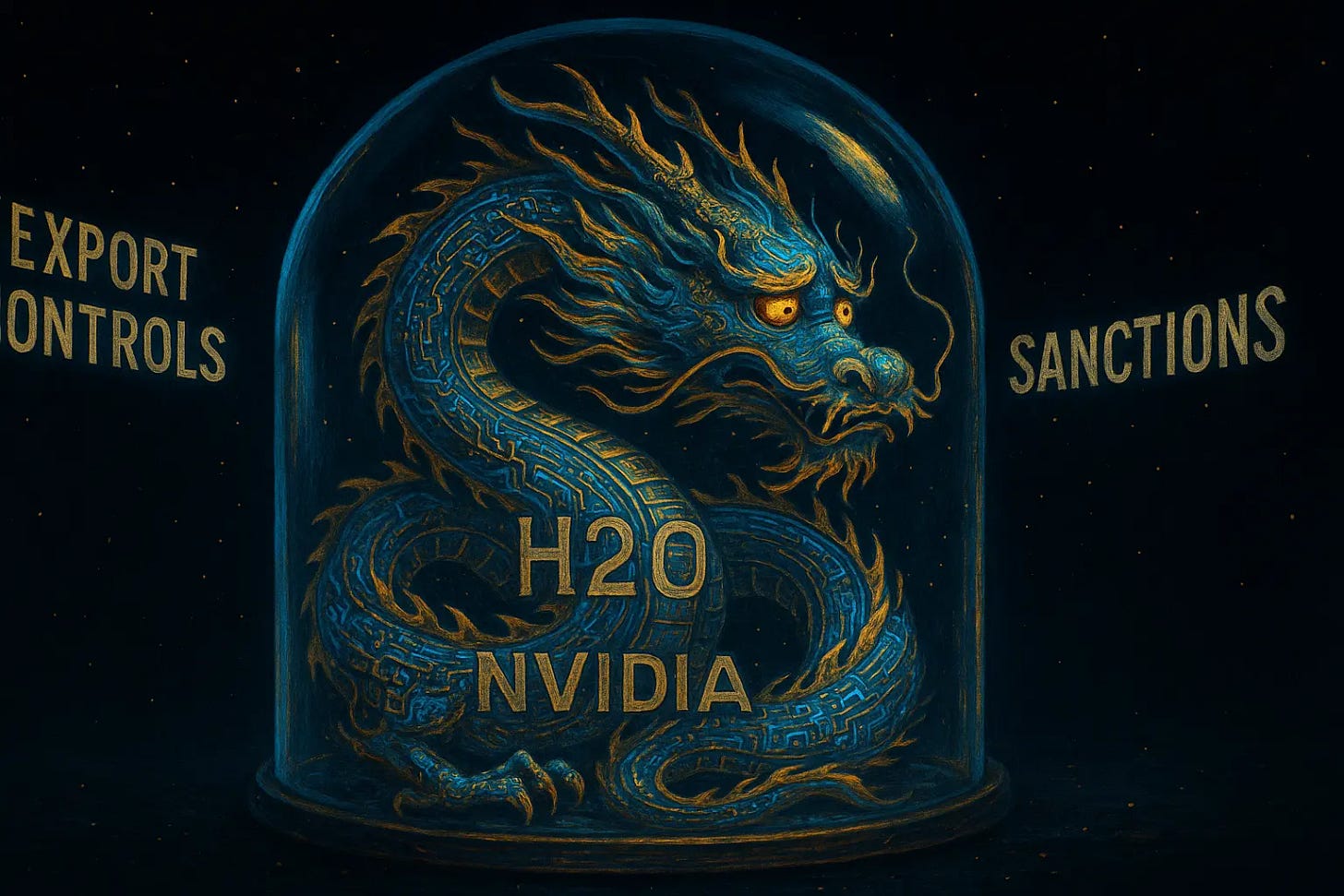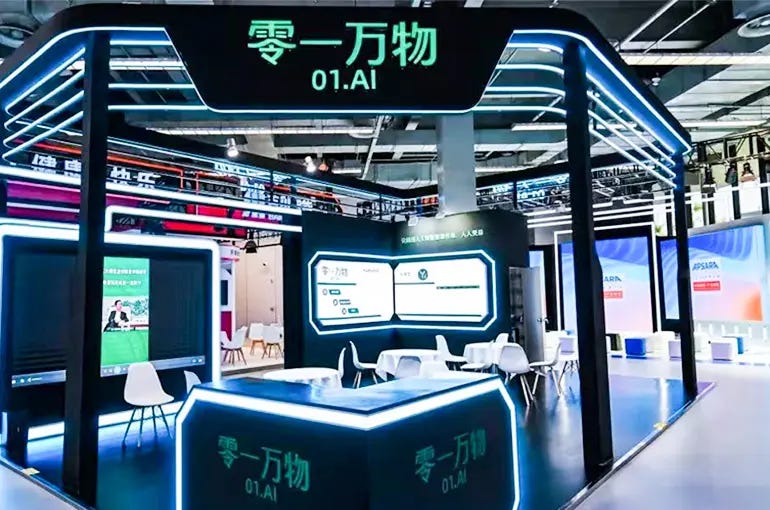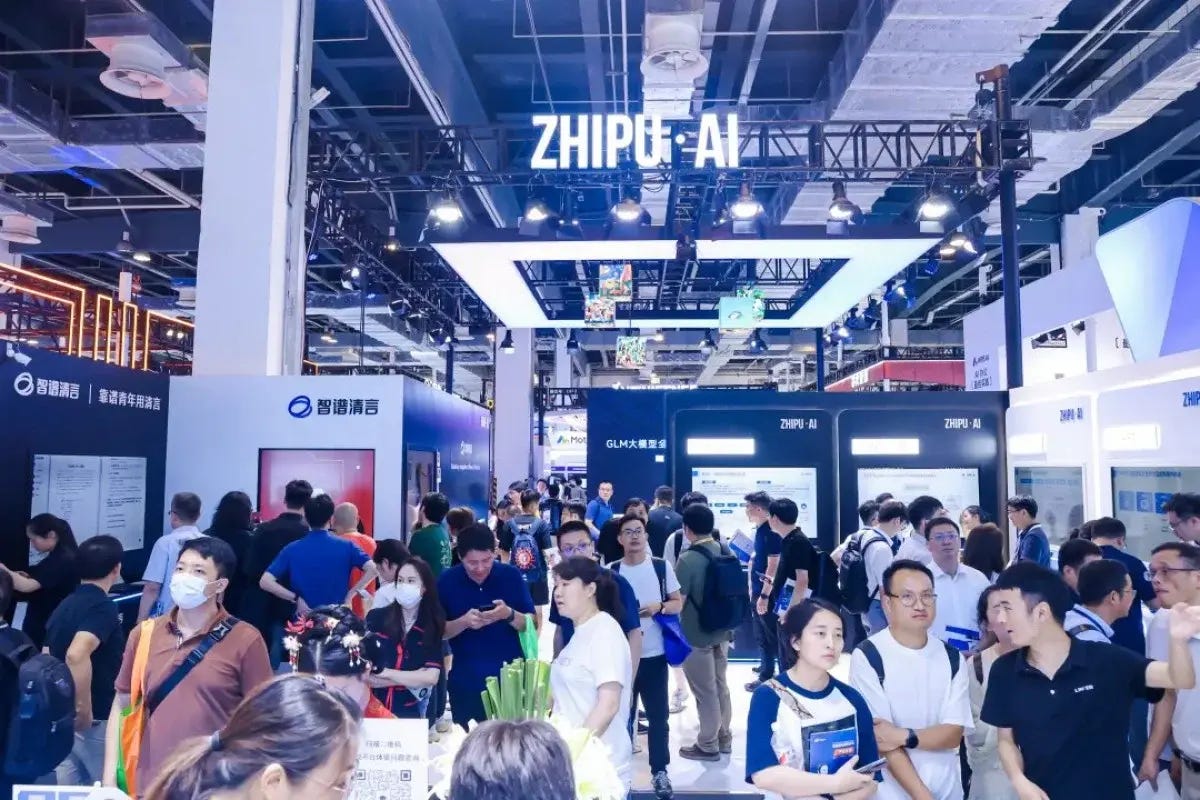China's AI Reckoning: The DeepSeek Stutter and the Search for What's Next
Hello China Tech by Poe Zhao – Weekly insights into China’s tech revolution. I analyze how developments in Chinese AI, electric vehicles, robotics, and semiconductors are reshaping global technology landscapes. Each piece contextualizes China’s innovations within worldwide market dynamics and strategic implications.
The delayed launch of a star startup’s flagship model signals a harsh new reality for the country’s AI ambitions. As the hype cycle cools, a brutal culling is underway, forcing companies to confront the immense pressures of capital, competition, and geopolitics.
For a moment in early 2025, Chinese AI startup DeepSeek embodied the sheer velocity and startling potential of the country’s tech sector. Its R1 reasoning model, a powerful open-source offering, was not just good; it was a global phenomenon. It delivered a “DeepSeek moment”—a shot across the bow that recalibrated perceptions of China’s ability to compete, and even lead, at the frontiers of artificial intelligence. The global developer community was abuzz, and venture capitalists took note. The planned follow-up, R2, was poised to cement its status as a bona fide rival to the Western titans.
Then, the rocket stuttered.
The scheduled May launch of R2 never happened. As reported by The Information and relayed by Reuters, the release has been indefinitely stalled. The reason? CEO Liang Wenfeng is reportedly unsatisfied with its performance. This is not a mere technical glitch; it is a strategic pause that speaks volumes about the immense pressures now bearing down on China’s AI champions.
DeepSeek’s hesitation is more than an internal affair. It is a bellwether for a broader, more sobering reality setting in across China’s once-feverish AI landscape. The era of unbridled optimism, fueled by seemingly limitless capital and a nationalistic drive to catch up with OpenAI, is giving way to a harsh reckoning. A brutal culling is thinning the herd, and the companies left standing face a daunting trifecta of challenges: a tightening venture capital market, the unforgiving physics of technological iteration, and the long shadow of U.S. export controls. The story of DeepSeek’s stalled progress is the story of China’s entire AI startup ecosystem entering a new, more perilous phase.
The Gravity of a Chip Shortage
While internal perfectionism is the proximate cause for R2’s delay, a more formidable, external force looms over DeepSeek and its peers: the scarcity of advanced silicon. The U.S. export ban on high-end Nvidia server chips has transitioned from a geopolitical headline to a stark operational bottleneck. According to employees at top Chinese cloud firms cited in reports, a potential surge in demand for a model like R2 would simply overwhelm their infrastructure.
These cloud providers, who are essential partners for distributing AI models to enterprise customers, are largely running existing models like DeepSeek’s R1 on Nvidia’s H20 chips—a less powerful, China-specific processor that was, for a time, the only legal option. However, fresh curbs imposed by the Trump administration in April have now choked off the supply of even these downgraded chips. Without a steady supply of the high-performance GPUs necessary for both training and inference at scale, the ambitions of China’s AI firms are tethered to a shrinking pool of hardware. This reality transforms the strategic calculus from a race of algorithmic innovation to a grim battle of resource attrition.
From “Six Dragons” to “Four Strongs”
This new, resource-constrained environment has accelerated a market consolidation that was already underway. Just a year ago, the industry narrative was dominated by the “AI Six Dragons,” a cohort of well-funded startups led by celebrated technologists, each vying to become the nation’s answer to OpenAI. The list was a who’s who of Chinese AI: Zhipu AI, MiniMax, Moonshot AI (Yuezhi Anmian), Step.AI (Jieyue Xingchen), Baichuan Intelligence, and 01.AI (Lingyi Wanwu). They were flush with cash, poached top talent, and moved with astonishing speed.
Today, that moniker is rarely used. The consensus, as detailed by Chinese tech media outlet 36Kr, is that the field has narrowed to the “AI Four Strongs,” with Baichuan and 01.AI having effectively fallen out of the race for foundational model supremacy. Their changing fortunes provide a stark lesson in the brutal economics of AI development.
Li Kaifu, the venerable tech guru and founder of 01.AI, made a pragmatic, if sobering, pivot. His firm has reportedly handed over the ruinously expensive task of training its largest models to Alibaba. “It’s very clear to everyone that only the big factories can afford to burn money on super-large models,” Li stated in an interview. His focus has shifted to developing more practical, cost-effective models and applications—a tacit admission that the race to build the biggest “brain” is a game few startups can afford to play.
Similarly, Baichuan Intelligence, founded by Sogou’s former CEO Wang Xiaochuan, has retreated from the general-purpose AI battlefield to focus on the vertical healthcare sector. Its foundational model development has gone quiet. This is another survival strategy: if you can’t win the war, find a defensible territory.
The attrition isn’t just at the company level; it’s happening within the “Four Strongs” as well. A brain drain of senior talent is plaguing the top players. Zhipu AI, arguably the most prominent of the four, has seen its COO, Zhang Fan, and Chief Strategy Officer, Zhang Kuo, depart in recent months. Moonshot AI’s former head of large model products has left to start his own venture. In a field where talent is the ultimate currency, these departures are destabilizing, signaling internal turmoil and potentially impacting the long-term trajectory of model development.
Zhipu AI: The Peril of Chasing a Ghost
Among the remaining contenders, the trajectory of Zhipu AI offers the most compelling case study of the challenges ahead. For a time, Zhipu was the undisputed frontrunner, the company that most diligently mirrored OpenAI’s entire product stack. From its GLM series of foundational models to its AI assistant and image generation tools, Zhipu was positioned as China’s most comprehensive challenger. This frontrunner status was cemented by its financial milestones: by 2025, its valuation reached 20 billion RMB (approximately $2.8 billion), and the company began preparing for a high-profile IPO on China’s A-share market, a move signaling immense pressure to deliver returns for its high-powered investors.
But in 2025, the cadence has slowed. While OpenAI continues a relentless pace of updates—GPT-4.5, GPT-4.1, and a suite of new reasoning models—Zhipu’s last major foundational model update was in late 2024. Its consumer-facing app, Zhipu Qingyan, languishes with under 7 million monthly active users, a rounding error compared to ChatGPT’s estimated 600 million.
The company is caught in a classic monetization conundrum. The direct-to-consumer subscription model that fuels OpenAI’s revenue has proven difficult in China, where user willingness to pay for software remains low. This forces a pivot to enterprise customers (To B), a path fraught with its own perils. The Chinese B2B market is notorious for demanding heavy customization, often dragging high-tech firms into the low-margin, labor-intensive business of project-based consulting—the so-called “SaaS trap.”
Recognizing this, Zhipu has publicly declared that its “highest priority strategy” is now, once again, “training the next-generation foundation model.” It’s a return to first principles, an acknowledgment that a sustainable business can only be built upon a durable technological edge. But it is an incredibly expensive gamble in a capital-constrained environment, and it pits them directly against the deep pockets of tech giants like Alibaba and ByteDance, who are now fully mobilized.
The Investor’s Shifting Calculus
This new reality on the ground is forcing a parallel transformation in the venture capital landscape that funds it. The heady question of 2024—“Who is the next OpenAI?“—has been replaced by a more pragmatic, and perhaps more anxious, one: ”Will there be another ‘DeepSeek moment’?"
The answer reveals a fundamental schism in how China’s tech financiers view the path forward. On one side are the pragmatists, like Wayne Shiong of China Growth Capital, who see the initial shockwave from DeepSeek as a unique event whose impact is impossible to replicate. “The original DeepSeek moment was so impactful because it caught the world by surprise,” he explained in a Bloomberg interview. That element of surprise, he contends, is now gone.
On the other side are the optimists, like former central bank deputy governor Zhu Min, who believe the innovation engine is just getting started. Speaking at the Summer Davos forum, he boldly predicted that China is on the cusp of more than a hundred “DeepSeek-like revelations” in the coming year and a half.
This debate over the frequency of breakthroughs is reshaping investment focus. With foundational models becoming a capital-intensive war of attrition, savvy investors are looking further down the value chain. Sean Ho of Triata Capital offers a useful framework, dividing the landscape into three segments: the “brains” (the LLMs), the data, and the end-user applications. For many, the real prize no longer lies in building the biggest brain. Instead, they are betting on disruptive applications that could become AI-native “super apps,” effectively turning the underlying models into a commodity.
Fueling this strategic pivot is a harsher fundraising climate. The flow of foreign capital has become tentative, and as Esther Wong of 3C AGI Partners notes, domestic yuan-denominated funds now come with “slightly tougher T&Cs.” This capital scarcity, combined with brutal domestic competition, creates a powerful forcing function: go global, or go home. It’s a strategy born of necessity, but also of newfound confidence. As Gobi Partners’ Chibo Tang observed, “With the success of companies like TikTok, Shein and Temu, Chinese entrepreneurs are more confident than ever that their product design, user experience and value propositions can be relevant and win in markets around the world.”
Conclusion: The Search for a New North Star
China’s AI startups are navigating a crucible. The initial gold rush, characterized by a singular focus on chasing OpenAI’s technical benchmarks, has ended. The new era is defined by a complex interplay of forces: the hard limits of hardware availability, the brutal economics of model training, the shifting demands of investors, and the constant threat of talent poaching by larger, better-funded rivals.
The DeepSeek stutter is a potent symbol of this transition. It reflects a maturing market where technical excellence must be balanced against strategic patience and resource management. The culling of the “Six Dragons” to the “Four Strongs” is not a sign of failure, but of a market rationalizing in the face of immense challenges.
The critical question for the industry is no longer simply “Who will be the next DeepSeek?” The more salient question is, "What kind of company can survive this harsher climate and define the next phase of competition?" The answer may not lie in building a slightly better foundational model. It may lie in creating a killer application that makes AI indispensable. Or it may lie in a clever hardware solution that circumvents the chip blockade. Or, perhaps, it will be the company that masters the art of global expansion, escaping the hyper-competitive confines of the mainland.
The race is far from over. But the finish line has moved, and the rules of the game have fundamentally changed. The companies that thrive will be not just the most technologically brilliant, but the most resilient, strategic, and adaptable. They are no longer just chasing a ghost in Silicon Valley; they are searching for a new, sustainable north star of their own.
About Hello China Tech
I’m Poe Zhao, and I bridge the gap between China’s rapidly evolving tech ecosystem and the global community. Through Hello China Tech, I provide twice-weekly analysis that goes beyond headlines to examine the strategic implications of China’s technological advancement.
Found this useful?
→ Share this newsletter with colleagues who need to understand China’s tech impact
→ Subscribe for free to receive every analysis:
→ Follow the conversation on 𝕏 for daily updates and additional insights
Get in touch: Have questions about China’s tech sector or suggestions for future analysis? Reply to this email – I read every message.







